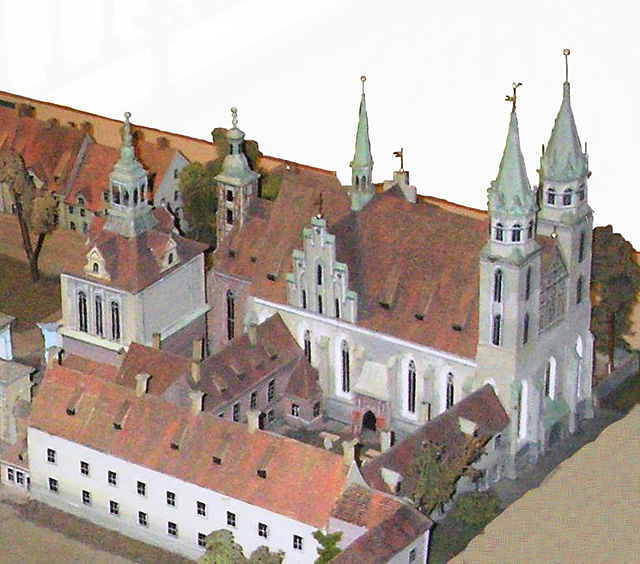The Berlin Palace, formally the Royal Palace, adjacent to the Berlin Cathedral and the Museum Island in the Mitte area of Berlin, was the main residence of the House of Hohenzollern from 1443 to 1918. Expanded by order of King Frederick I of Prussia according to plans by Andreas Schlüter from 1689 to 1713, it was thereafter considered a major work of Prussian Baroque architecture. The royal palace was one of Berlin’s largest buildings and shaped the cityscape with its 60-meter-high (200 ft) dome.
The west and north façades of the reconstructed Berlin Palace. Completed in 2020, the palace now houses the Humboldt Forum museum.
The Berlin Palace (left) with the National Kaiser Wilhelm Monument to Wilhelm I (destroyed 1950), c. 1900
The Berlin Palace (letter A) on the Memhardt-Plan, 1652
The Renaissance residence (palace) in the 17th century (as painted by Abraham Begeyn)
Berlin Cathedral, also known as the Evangelical Supreme Parish and Collegiate Church, is a monumental German Protestant church and dynastic tomb on the Museum Island in central Berlin. Having its origins as a castle chapel for the Berlin Palace, several structures have served to house the church since the 15th century. The present collegiate church was built from 1894 to 1905 by order of Emperor William II according to plans by Julius Raschdorff in Renaissance and Baroque Revival styles. The listed building is the largest Protestant church in Germany and one of the most important dynastic tombs in Europe. In addition to church services, the cathedral is used for state ceremonies, concerts and other events.
Berlin Cathedral: Evangelical Supreme Parish and Collegiate Church (2017)
The Supreme Parish Church with its double-tower façade of 1538 with northerly adjacent parts of Berlin's Palace. Miniature shown in the present church building.
View of the interior of the Supreme Parish Church in 1705 (the only known graphic with this view)
The Supreme Parish Church in 1736 with its new towers








